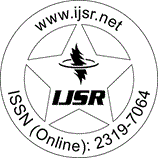Downloads: 129 | Weekly Hits: ⮙1 | Monthly Hits: ⮙1
Research Paper | Electronics & Communication Engineering | Bhutan | Volume 6 Issue 12, December 2017
Feasibility Study on Using Passive Infrared Sensor for Wild Pig Repellent System in Bhutan
Chencho [2] | Dechen Lhamo | Kelzang Dorji
Abstract: Every year, farmers in Bhutan lose their crops to wild animals, and it has remained as the same problem over the years. Farmers and Government of Bhutan struggles to get rid of this problem. In the western part of Bhutan, the major crop damage is done by wild pigs. This study was carried out to see the feasibility of using Passive Infrared Sensor (PIR) to protect crops from wild pigs. PIR sensors are motion detector sensors and operates based on the infrared radiation from the body. The sensor has the advantage of low cost, and it is used extensively in indoor automated motion detection systems. All bodies including human emit infrared radiation and the radiation amount depends on body surface temperature. The proposed system consists of a sensing unit, and an alarm unit comprising of a lighting and an audio system. The sensing unit make use of PIR sensor to activate the alarm unit. The audio system is recorded with the sounds that our farmers use to chase away wild pigs during the night hours such as beating of the drums, dog barking etc. The sensor gets activated producing an electrical output which triggers the alarm unit turning ON the light and the audio system.
Keywords: Crops, Wild Pig, Feasibility, PIR Sensor, Detection
Edition: Volume 6 Issue 12, December 2017,
Pages: 178 - 181
Similar Articles with Keyword 'Crops'
Downloads: 109
Research Paper, Electronics & Communication Engineering, India, Volume 4 Issue 5, May 2015
Pages: 2993 - 2995Design of Universal Automatic Robot for Nutrition Management in Controlled Agriculture
Pranay Gopal Umate | Dr. A. M. Agarkar
Downloads: 110
Research Paper, Electronics & Communication Engineering, India, Volume 2 Issue 4, April 2013
Pages: 205 - 208Intelligent Crop Management System for Greenhouse Environment
Jay S. Sharma | Gautam D. Makwana
